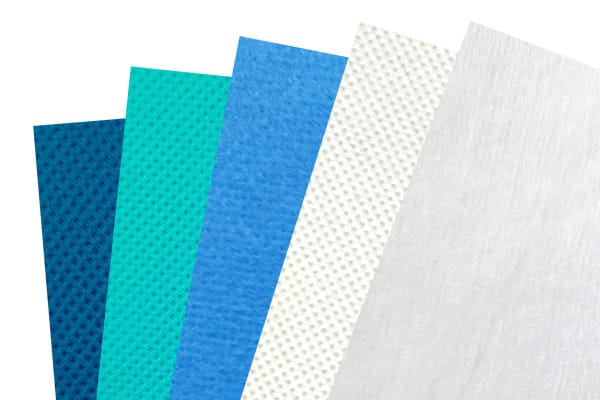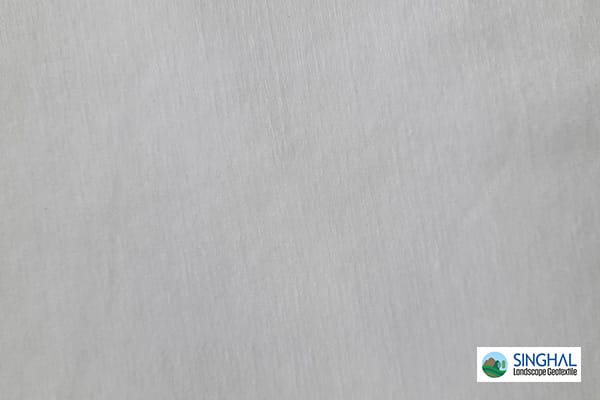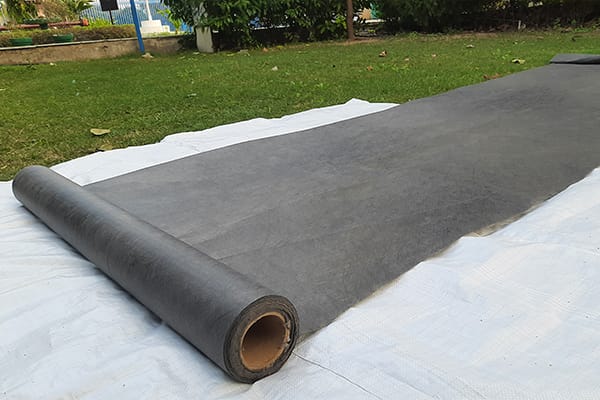Non Woven Baby Diapers Fabric Manufacturer
Non Woven Baby Diapers Fabric consist of multiple layers, each designed for comfort, absorbency, and protection. These layers ensure a soft, breathable surface that keeps the baby’s skin dry while locking in moisture. This combination of carefully selected materials ensures that diapers remain comfortable, effective, and safe for prolonged use.
Singhal Landscape Geotextile – Leading non woven baby diaper fabric manufacturer, produces high-quality, soft, and durable materials. For premium Quality Weed Mat in bulk, contact us today!
Key Features of Non Woven Baby Diapers Fabric
Soft and Comfortable: Gentle on the baby’s skin, reducing the risk of irritation.
Breathable: Allows air to circulate, keeping your baby’s skin dry and comfortable.
Anti-bacterial and Anti-UV: Helps in maintaining hygiene and protecting the baby from harmful UV rays.
Flame-retardant: Provides an additional layer of safety.
Hydrophilic: Attracts and retains moisture effectively.
100% Polypropylene: Commonly used due to its softness, absorbency, and durability.
- Super Absorbent: These fabrics have a high absorbency capacity, often four times faster than ordinary cotton cloth.
- Elasticity: Conforms to the baby’s movements.
- Strength: Secures the core for effective absorption.
- Waterproof: Prevents leaks.
- Lightweight: Non-woven baby diaper fabrics are lightweight, ensuring comfort and efficiency.
- Hypoallergenic: Hypoallergenic non-woven baby diaper fabrics reduce skin irritation and allergic reactions, ideal for sensitive skin.
Common Application of Non Woven Baby Diapers Fabric
- Baby Diapers: Main use due to their comfort and absorbency.
- Sanitary Napkins: Also used for their absorbent properties.
- Pet Pads: Suitable for pet hygiene.
- Wet Wipes: Used in various hygiene products.
Key Benefits of Non woven Baby Diapers Fabric
Comfort: The soft, breathable non-woven fabric prevents irritation and ensures a comfy fit.
Absorbency: The combination of nonwoven fabric and superabsorbent polymers provides excellent absorbency, keeping the baby dry and preventing leaks.
Breathability: The breathable backsheet allows air to circulate, reducing the risk of diaper rash.
Durability: Nonwoven fabric is strong and durable, ensuring the diaper can withstand multiple uses and washes.
Softness: The top layer is soft, breathable nonwoven fabric for comfort and less irritation.
Distribution Layer: This nonwoven layer distributes liquid evenly, preventing leaks and enhancing absorbency.
Lightweight: Non-woven fabric is extremely light, making the diapers less bulky and more comfortable for babies. This reduces the diaper’s weight, so babies can move freely without feeling weighed down.
Flexible Fit: Non-woven materials are stretchable and adaptable, allowing diapers to fit snugly around a baby’s body. This flexibility ensures that the diaper moves with the baby, offering comfort while preventing leakage.
FAQs About Non Woven Baby Diapers Fabric
What is non-woven fabric in baby diapers?
Non-woven fabric is a type of fabric made without weaving or knitting. Instead of weaving, fibers are bonded chemically, thermally, or mechanically. Non-woven fabrics in baby diapers offer softness, breathability, and moisture-wicking, ideal for sensitive skin.
What materials are commonly used in non-woven diaper fabrics?
Most non-woven fabrics in diapers are made from polypropylene (PP) for their light weight, softness, and durability. Polyester is sometimes added to give certain layers extra strength and absorbency.
Are non-woven fabrics in diapers safe for babies?
Yes, non-woven fabrics in baby diapers are safe, hypoallergenic, soft, and chemical-free. Manufacturers carefully choose materials that minimize irritation and keep the skin dry.
How do non-woven fabrics keep diapers leak-proof?
Nonwoven fabrics form both the inner and outer layers of the diaper. The outer back sheet is a breathable, waterproof layer that locks in moisture while allowing air circulation.
How is the softness of a diaper achieved with non-woven fabrics?
Diapers use soft, fine fibers in the non-woven top sheet for gentle skin contact. These layers are treated for a smooth, soft, and non-abrasive feel to prevent irritation.
Why are non-woven fabrics preferred over traditional woven fabrics in diapers?
Non-woven fabrics are preferred because they are softer, more breathable, and lighter than traditional woven fabrics. They also provide better fluid management, making them ideal for disposable baby diapers where comfort and absorbency are critical.
Do non-woven fabrics in diapers contribute to skin rashes?
High-quality non-woven fabrics used in modern diapers are generally designed to prevent skin rashes. They wick moisture away and allow airflow, keeping the diaper area dry and reducing rashes.
How does the elasticity in non-woven fabrics help in diaper fit?
Non-woven fabrics combined with elastic materials are used in leg cuffs and waistbands. These materials provide a snug, secure fit that adapts to the baby’s movements and prevents leaks without restricting comfort.
Is there a difference between adult and baby non-woven diaper fabrics?
Baby diapers prioritize softness for sensitive skin, while adult diapers focus on absorbency and odor control.
Specification of Non Woven Baby Diapers Fabric
Weight (GSM)
10–30 GSM: Lightweight, suitable for wrapping and protective covers.
30–80 GSM: Medium-weight, commonly used for reusable shopping bags and padded envelopes.
80–150 GSM: Heavier nonwoven fabrics for applications requiring more durability, such as insulated packaging and agricultural bags.
Colour
Gray & Custom as per requirement
Width
1.6, 3.2 or as per request
Length
as per requirement
Packaging Type
Roll From
Material
Polyester/Polypropylene







